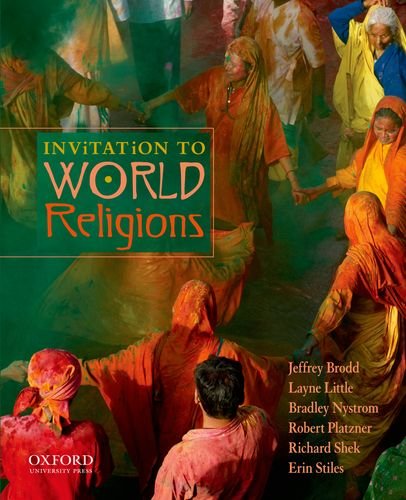Invitation to World Religions
Featuring a unique, consistent, and modular chapter structure–“Teachings,” “Way of Life,” and “History”–and numerous pedagogical features, Invitation to World Religions invites students to explore the world’s great religions with respect and a sense of wonder. It describes the essential features of each religion and shows how they have responded to basic human needs and to
Featuring a unique, consistent, and modular chapter structure–“Teachings,” “Way of Life,” and “History”–and numerous pedagogical features, Invitation to World Religions invites students to explore the world’s great religions with respect and a sense of wonder. It describes the essential features of each religion and shows how they have responded to basic human needs and to the cultural contexts in which they developed. The authors also encourage students to develop an appreciation of what religious beliefs and practices actually mean to their adherents.
FEATURES:
A consistent, modular chapter structure–“Teachings,” “Way of Life,” and “History”–enables students to focus on content rather than trying to navigate each chapter anew
Voices: In personal, candid interviews, a diverse array of people share the ways in which they live their faiths
Visual guides: Keys to important religious symbols–in easy-to-read tables–offer quick reference and comparison points
Chapter-opening maps provide geographical context for each religion’s development
Timelines help students trace the evolution of each religion within its larger social and political context
Seeking Answers sections at the end of each chapter encourage students to constructively compare the ways in which different religions address the same essential questions
For Review questions prompt students to reexamine essential concepts
For Further Reflection questions invite students to think critically and to engage in deeper analyses
Key Terms are boldfaced at their first appearance and defined in the glossary that follows each chapter
A Glossary at the back of the book includes all of the key terms from the text
Suggestions for Further Reading direct students to some of the best and most recent print and online resources on each tradition
A wealth of rich, robust, and relevant color photographs and illustrations keep students visually engaged
An Instructor’s Manual with Computerized Test Bank on CD, downloadable Learning Management System Cartridges, and a Companion Website provide additional resources







Comments